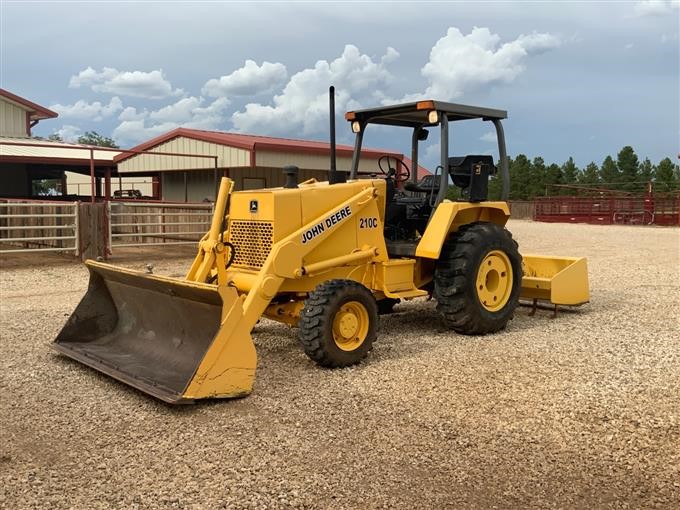
Our test tractor was outfitted with R4 industrial tires, which are a good compromise with traction near that of R1 Ag tires, but more turf friendly. Even factoring in the added weight of tractor-loader-backhoe packages which nearly always equates to great traction, the 3033R TLB combination achieves near-perfect balance to the point where we rarely needed to engage 4WD. Traction was another area where the John Deere 3033R shined.
JOHN DEERE 210C BACKHOE REVIEWS SERIES
Comments like “the new tilt wheel mechanism is much more positive than the one used on the Three-Thousand Twenty series tractors” (which for the time was quite nice) or, “this is the first backhoe I’ve taken off and put back on without struggling with some pin, mount point, or angle”, kept popping up. That comfortability, ease of use, and fit/function framed many a conversation long after the tractor work for the day was finished. To say John Deere knows ergonomic design may sound like a cliché, but misses the point: while every tractor manufacturer today incorporates ergonomic thought into their designs, John Deere seems to always be one step ahead. While this may seem to be expected performance from a new tractor, we can’t say this is the quality/performance level of every long-term test tractor we’ve had.Īnother thing that stood out during our time with the John Deere 3033R was the top-to-bottom ergonomic engineering along with model itineration refinements that have brought it to its current state. And while we kept engine hours below the agreed-upon 25-hour mark, with tasks that included reconfiguring an existing firepit and digging another from scratch, relocating arborvitae trees, spreading topsoil, moving boulders, and digging out numerous stumps, we never stalled the tractor, had to tighten a loose nut/bolt (we did check wheel bolt torque for safety sake), clean up any kind of spill, or have to top off any fluid other than diesel fuel.


One thing is for certain about our John Deere 3033R long-term test tractor – it never let us down.


 0 kommentar(er)
0 kommentar(er)
